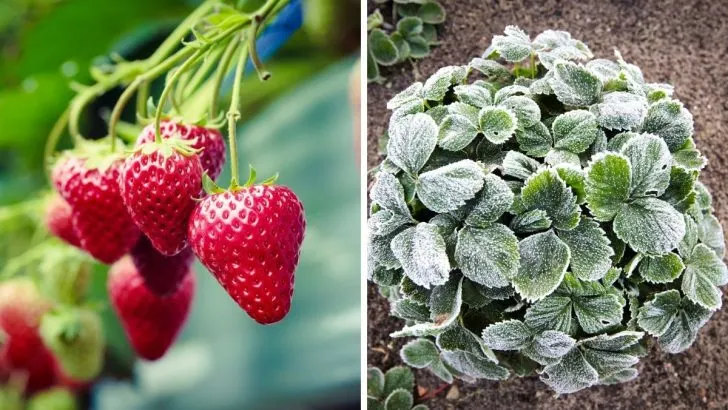Are you concerned about how to protect your beloved strawberry plants as winter’s icy grip sets in? Even though strawberries are perennial wonders, they do appreciate a well-thought-out plan to dodge the chill and burst into life next spring.
Whether your plants are snug in the garden soil, nestled in raised beds, or perched in pots, giving them the right winter care can be the difference between a bountiful harvest and plants that merely hang on by a thread.
Strawberries are tough little soldiers, yet they still need our assistance to gear up for winter. This preparation not only ensures their survival through the cold months but also lays the groundwork for a robust blooming and fruiting season.
It’s all about the way you tuck them in for winter slumber—your approach can spell the difference between them thriving or merely surviving.
Understanding Your Strawberries: June Bearing vs. Everbearing
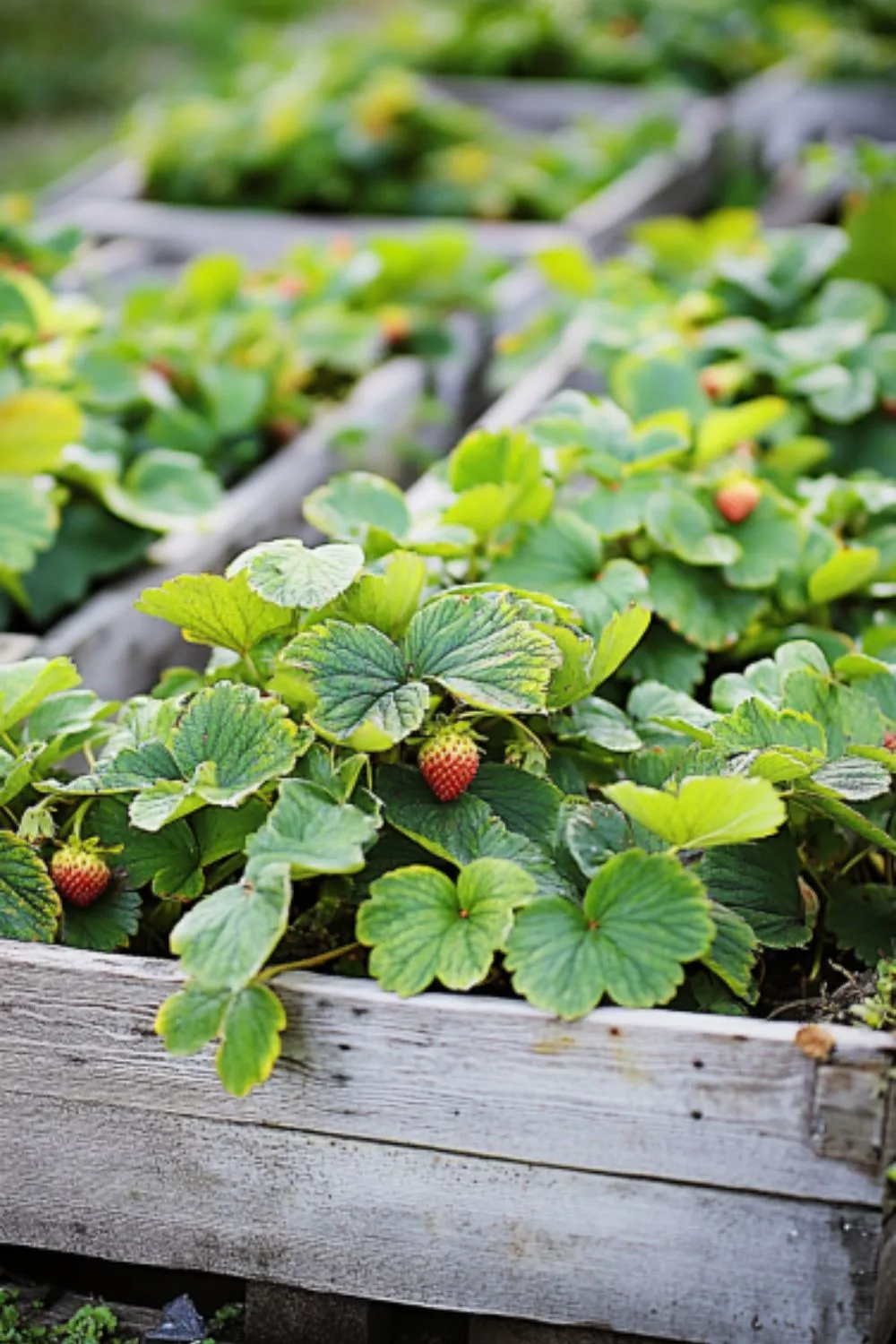
Before we dive into protection strategies, it’s important to know your strawberries. Are you nurturing June bearing or everbearing plants? June bearers deliver their fruits all at once, usually around—no surprise—June. They prefer garden plots or raised beds and are rarely container-bound. Their fruiting pattern demands different care throughout the year, and winter prep is a crucial part of this.
Everbearing strawberries, on the other hand, are the gift that keeps on giving throughout the growing season. They adapt well to gardens, raised beds, or even pots and hanging baskets. Depending on their home, they’ll need tailored care to brave the winter months.
Safeguarding June Bearing Strawberries
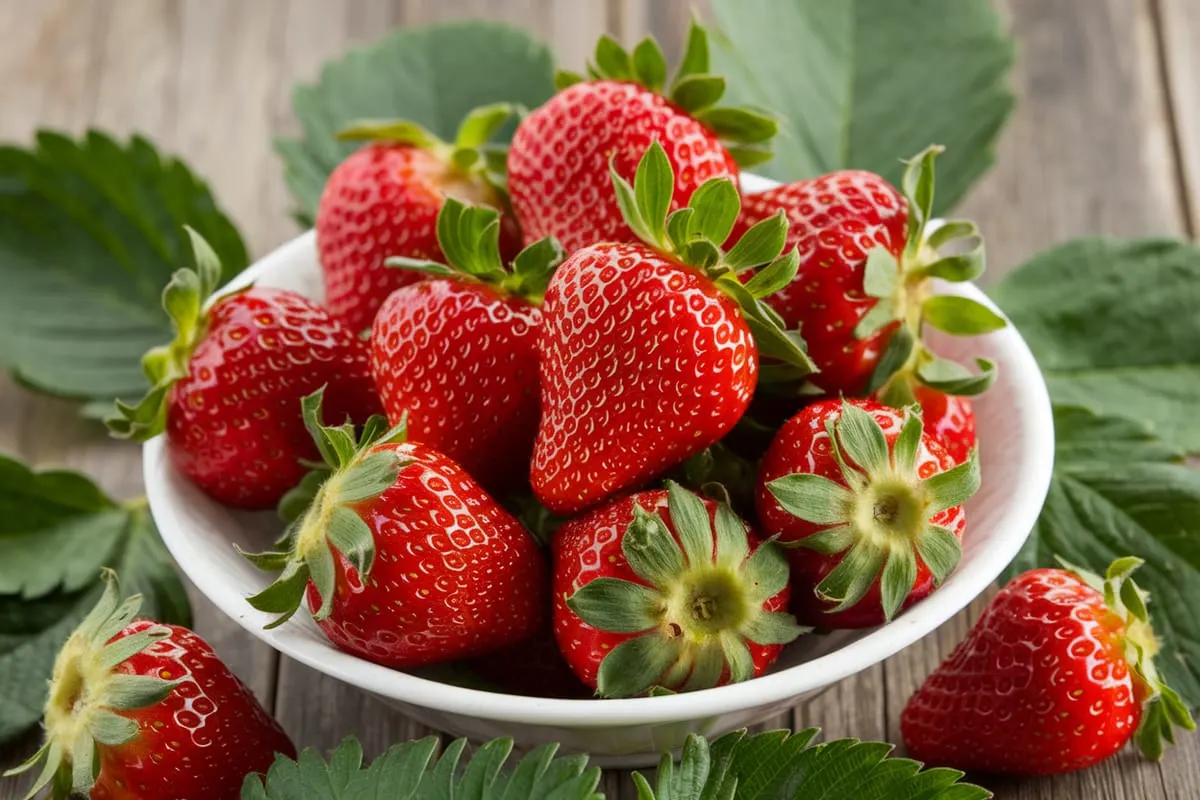
June bearing plants have a one-time fruiting spree, leading to specific aftercare. As the summer sun wanes, these plants benefit from a good haircut. Trimming them in July (or whenever their fruiting wraps up) encourages vigorous new growth, setting the stage for the next season.
However, beware: cutting them back in the fall can spell disaster. If they’re trimmed too late, they might lack the protective foliage necessary to withstand freezing temperatures. If you missed the summer trim, let your plants keep their leaves through the winter, like a warm blanket against the cold.
Fall Mulching: Your Strawberries’ Winter Coat
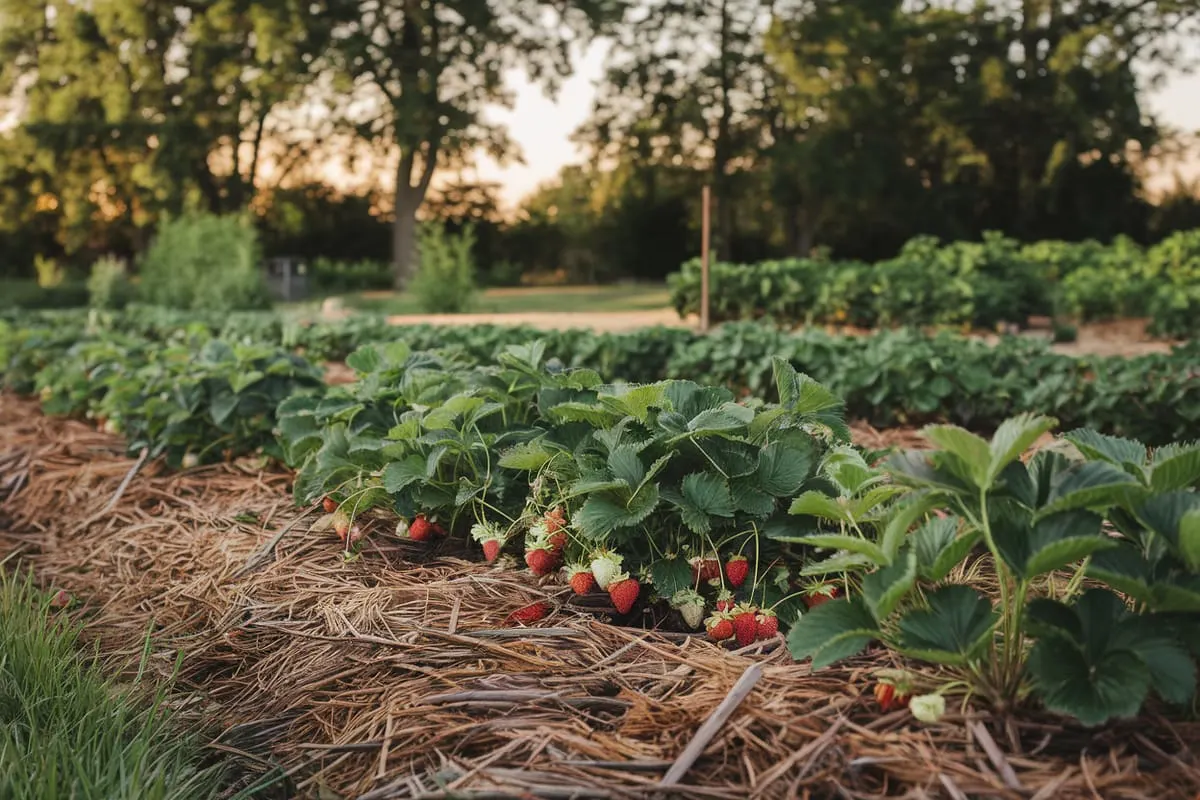
Mulching is your go-to strategy for shielding June bearing strawberries from winter’s wrath. A cozy layer of mulch not only offers thermal insulation but also fends off pesky weeds that could sap vital nutrients.
Straw, shredded leaves, and pine needles are excellent options to blanket your plants come late fall. Remember, the mulch should be protective but breathable—whole leaves can lead to air-blocking mats.
Ensuring Winter Survival for Everbearing Strawberries
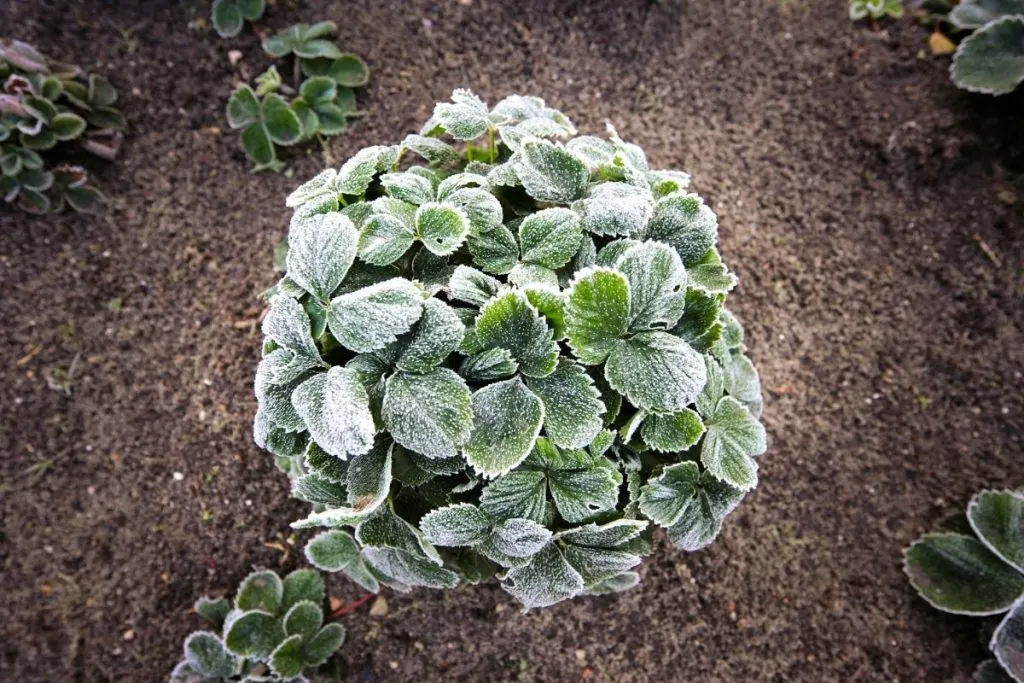
Everbearing strawberries are resilient and keep on giving right up until frost makes its appearance. They don’t require cutting back, but they do need added insulation to brave the winter chill. If your everbearing varieties are bedded in the garden, a few inches of mulch will do wonders to keep the cold at bay.
Whether your everbearers are nestled in garden beds or residing in pots, they require different strategies to shield them from the freeze. Growing in beds? A comfy blanket of straw or shredded leaves applied as they enter dormancy will safeguard their delicate crowns.
Special Care for Potted Everbearing Strawberries
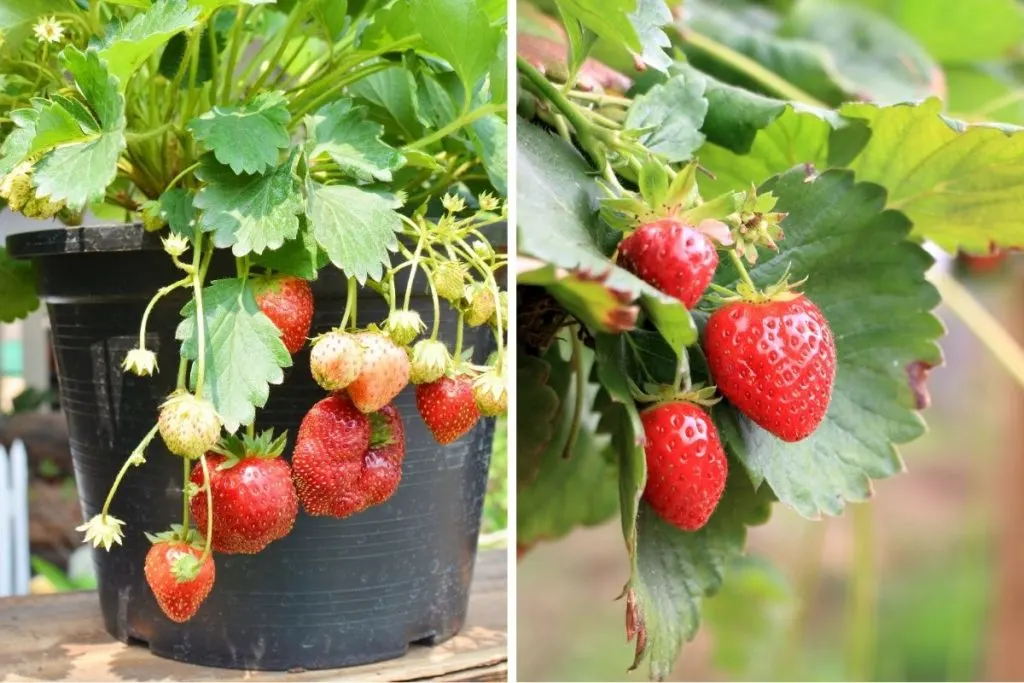
Potted plants are particularly vulnerable to winter’s harshness. The containers themselves can become iceboxes if left exposed, risking root damage with constant freezing and thawing. You have a couple of options to prevent this: relocate them indoors or bury the pots into the ground.
If moving them indoors, choose a cool location that remains steadfastly above freezing. A garage or basement works well, but keep them close to an interior heated wall for extra warmth.
Alternatively, dig a hole in a flowerbed to snugly fit the pot, covering it with mulch, effectively mimicking in-ground conditions and shielding it from temperature fluctuations.
Nurturing Your Strawberries Through Winter’s Challenges

By taking these steps to shield your strawberry plants, you’re ensuring that they’ll greet spring with vigor and plenty of fruits. A bit of preparation this fall will pay off when your strawberries bask in the summer sun and reward you with their juicy, sweet gifts.

